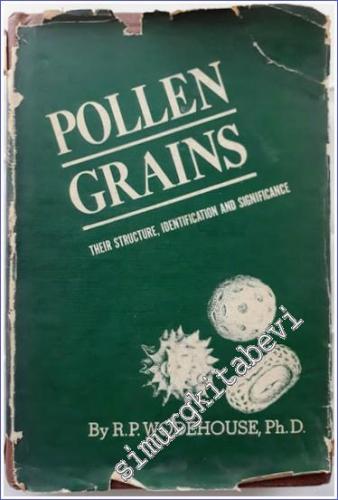#smrgSAHAF Pollen Grains : Their Structure Identification and Significance in Science and Medicine - 1965

Facsimile of the edition of 1935
PREFACE
The morphology of pollen grains is as old as most other branches of botanical science; historically, we find that it started at the same time as those which require the use of the microscope, but, through the years which followed - and, indeed, until very recently - it has been neglected to such an extent that it has lagged far behind all other branches of botanical science. At the present time the discovered is but a small part of the discoverable in pollen morphology. The present work, therefore, cannot be a compendium of much knowledge, if, indeed, such were desirable. Though it presents as far as possible what is known about pollen grains, it does so primarily with the object of bringing out the principles involved in their study, of showing where new discoveries may be made, and of furnishing a reliable method of approach.
In the preparation of the material, I have written the sections regarding the pollen grains of the different families and those regarding the evolutionary tendencies as I came to them separately and, for the most part, independently of each other. Consequently they may be read in the same way. Nevertheless, as the different families were finished it was found that they would fit together, quite naturally, in a sequence corresponding, for the most part, to the system of Engler and Prantl. In a few instances, however, in which continuity of the story of the pollengrain forms demanded a deviation from this sequence, concession was made to the morphology of the pollen grains. Though the story presented here is only fragmentary, its underlying continuity will be better appreciated if approached in the sequence in which it is presented. And this will have the added advantage of emphasizing the huge gaps that remain unfilled and so jend stimulus to their filling which is, perhaps, the most valuable purpose of this book. In selecting the species of pollen for study, I have kept in mind those of my readers who wish to be able to identify pollen
Facsimile of the edition of 1935
PREFACE
The morphology of pollen grains is as old as most other branches of botanical science; historically, we find that it started at the same time as those which require the use of the microscope, but, through the years which followed - and, indeed, until very recently - it has been neglected to such an extent that it has lagged far behind all other branches of botanical science. At the present time the discovered is but a small part of the discoverable in pollen morphology. The present work, therefore, cannot be a compendium of much knowledge, if, indeed, such were desirable. Though it presents as far as possible what is known about pollen grains, it does so primarily with the object of bringing out the principles involved in their study, of showing where new discoveries may be made, and of furnishing a reliable method of approach.
In the preparation of the material, I have written the sections regarding the pollen grains of the different families and those regarding the evolutionary tendencies as I came to them separately and, for the most part, independently of each other. Consequently they may be read in the same way. Nevertheless, as the different families were finished it was found that they would fit together, quite naturally, in a sequence corresponding, for the most part, to the system of Engler and Prantl. In a few instances, however, in which continuity of the story of the pollengrain forms demanded a deviation from this sequence, concession was made to the morphology of the pollen grains. Though the story presented here is only fragmentary, its underlying continuity will be better appreciated if approached in the sequence in which it is presented. And this will have the added advantage of emphasizing the huge gaps that remain unfilled and so jend stimulus to their filling which is, perhaps, the most valuable purpose of this book. In selecting the species of pollen for study, I have kept in mind those of my readers who wish to be able to identify pollen















